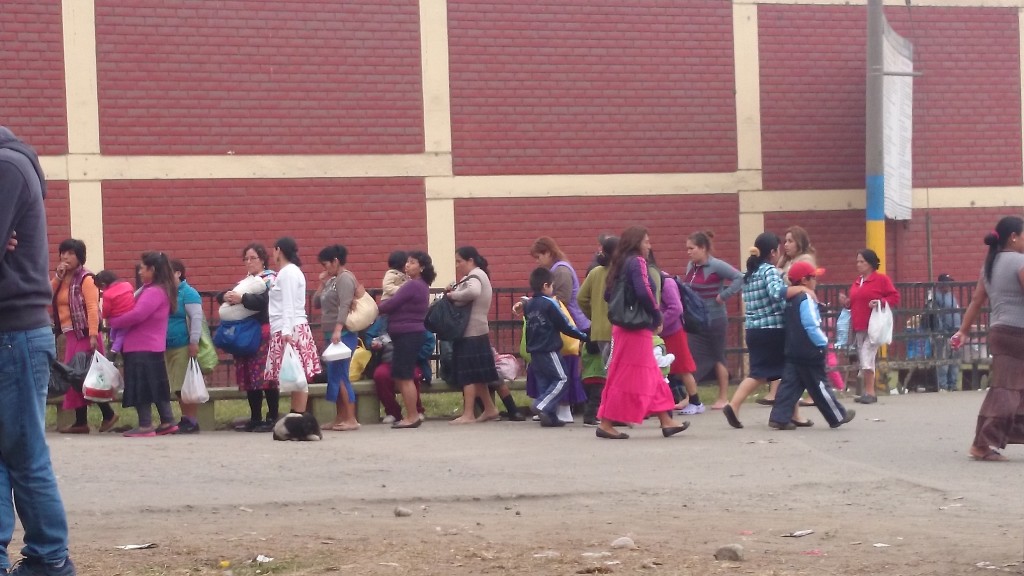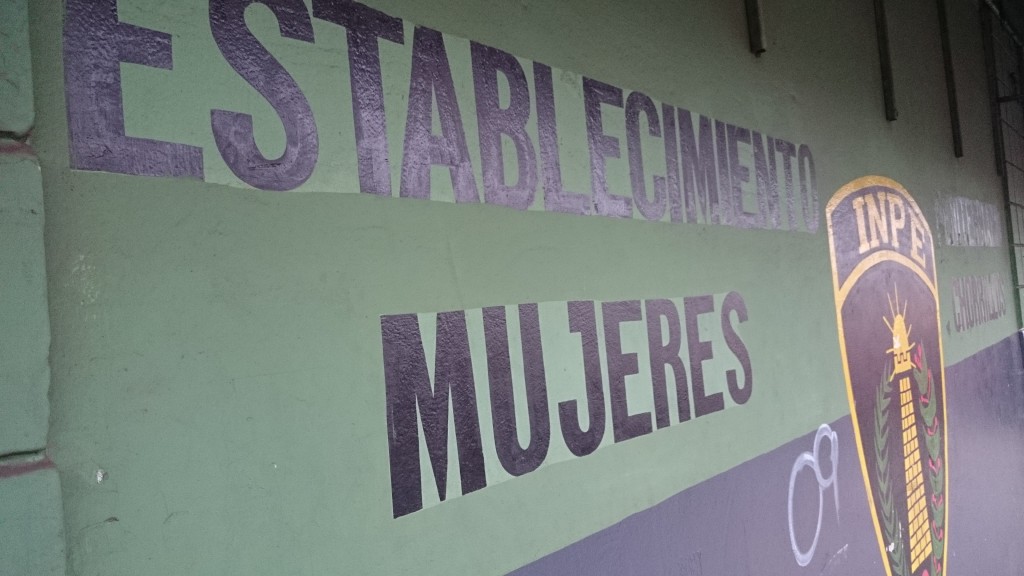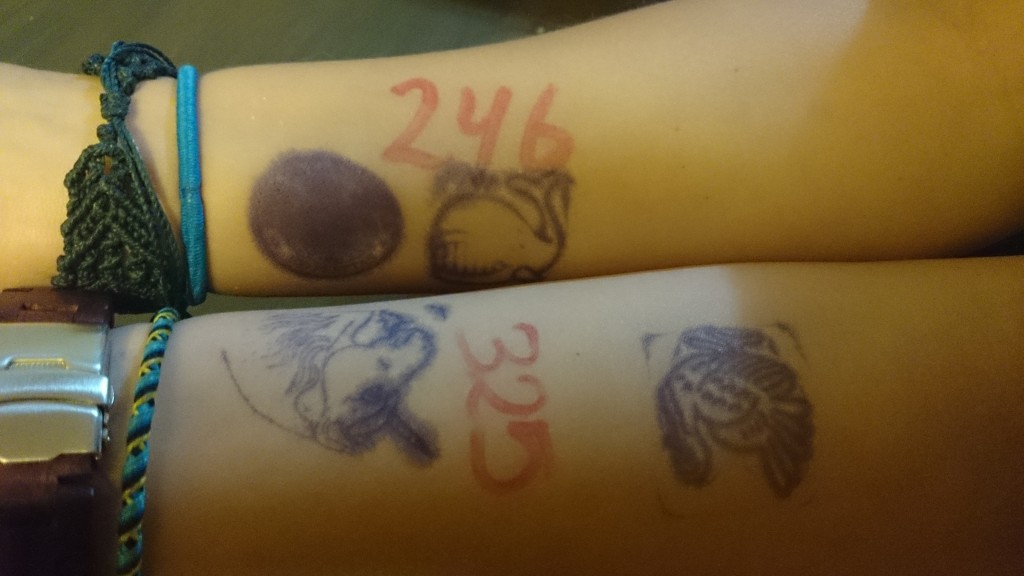We are collecting material for a story about designer clothes which are sawn inside Peruvian prisons (you will be able to read about it soon). The press office remains indifferent to our inquiries so we decide to enter those prisons on visiting days. The male prison in the Lurigancho district, which is famous for being the worst in the whole country, established three visiting days per week: Wednesday and Saturday for women and Sunday – for men.
The street outside the prison looks like a market: there are fruits, pasta, baked pigs and sweets. There is also a portable manicure and pedicure stand and a beauty stand next to it (all under white garden umbrellas). Nails, make up, lowlights and African pigtails. And the skirts. They are everywhere! Made from cotton and wool, simple or patterned. There is a reason for their presence here but I don’t know it yet.
A corpulent and happy seller pulls me into her stand: – Amigita, they won’t let you enter in those pants. Come here, I will lend you some skirt.
It costs me 1 sol to rent this skirt but I need to leave my jeans as a guarantee. Amigita takes my jacket and my shawl away too – “because the prisoners hang on it”. I try to find out where this skirt regulation comes from but the guard just shrugs.
– Maybe it is easier to smuggle something inside. The same reason should be for forbidding high heels. They are afraid of drugs – an elderly lade in queue tries to figure this out for me. But she herself is carrying a huge mattress with her which makes this argument nonsense. At the same time, men don’t have to wear skirts, they are only expected to take off their belts.
I can see more obvious ways to smuggle something inside the prison: package of cake which a woman carry to celebrate her son’s second birthday together with her husband, countless rolls of toilet paper which everybody is holding or take-away food packed in styrofoam. I think that transporting a knife it’s actually possible too – there is no metal detector here to scan me.
The queue is as long as the oldest boa on earth must be (I read somewhere that they keep on growing till they die). In the queue there are: sisters, wives, partners, grandmothers, mothers-in-law, teenage daughters and sons. You can go around this massive queue as long as you have enough pesos to give away. Nobody is surprised, that’s the way it is. There are even women who offer fulfilling the visitor’s form for 50 centavos. I could do it on my own but my pen has just finished so I need to pay them too. I start to read a book to kill time and a young, newly-wed girl notices that. There is nobody else reading here.
– Are you going to preach? – she asks. I am the only foreign person at probably the first Pole ever in this queue. All the guards are dying to know who I am visiting but the chance they know Perci – one of more than six thousands prisoners – is very low. 21 pavilions of this prison where designed for half of the amount of prisoners they host now. The prisoners sleep in overcrowded cells, sometimes 32 of them in one room, on beds or mattresses on the floor. This is a common problem in Latin America.
The last thing I need to do before I enter the prison is leaving my passport. There is also a control: a corpulent female bodyguard looks into my bra and between my thighs and that’s it – I am in (without my phone though so there won’t be any pictures, sorry). I had some clichés in mind before entering and I must admit I was a bit reserved. To my surprise, all the prisoners are very kind to me, they greet me with a wide smile and ask me who I am looking for (of course, the service of guiding me to the right pavilion costs another sol).
– Don’t be afraid, we all love visiting days. Nobody touches the guests! – an older prisoners taps my shoulder. He walks around with a box tied to his neck – the same type that cigarette sellers used to carry in Paris at the beginning of XXth century. He sells sweets.
I enter the pavilion 19A and I find lots of stands. It looks as if it was a market day not a visiting day! Porcelain, bags, wallets. The ground floor of this building is full of different workshops, the biggest one belongs to ceramics. There are Mickey Mouses, dragons, garden dwarfs.
I find Perci bowed at the sewing machine. He is rather short, no facial hair, he looks happy. He has been here for 11 years for assault and murder. One of his three friends who were robbing the truck packed with cigarettes shot the guard. That was not their plan.
– I earned good money on a construction site. But I was immature, I needed adrenaline – he recalls. Now he sews designer clothes for Project Pieta to sustain his three children who live free outside (his last, 5-year old son was conceived on a visiting day).
He has a phone in his pocket although theoretically it’s forbidden, he also has illegal access to internet and Facebook. Everything is the matter of peso here. Our friend from Lima told us that gangsters have their own suites with bath tubs here. Newspapers wrote about parties with life orchestra a couple of days ago – a can of illegal beer costed 11 sols.
– In fact, we have everything here. The only thing which we miss is going outside, enjoying life and coming back – Perci blinks to me.
PS. The next day, to enter female prison I needed lots of funny stamps. A swan, a whale, why not?



